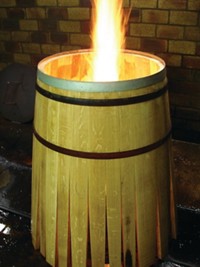Advertisement
Grab your lab coat. Let's get started
Welcome!
Welcome!
Create an account below to get 6 C&EN articles per month, receive newsletters and more - all free.
It seems this is your first time logging in online. Please enter the following information to continue.
As an ACS member you automatically get access to this site. All we need is few more details to create your reading experience.
Not you? Sign in with a different account.
Not you? Sign in with a different account.
ERROR 1
ERROR 1
ERROR 2
ERROR 2
ERROR 2
ERROR 2
ERROR 2
Password and Confirm password must match.
If you have an ACS member number, please enter it here so we can link this account to your membership. (optional)
ERROR 2
ACS values your privacy. By submitting your information, you are gaining access to C&EN and subscribing to our weekly newsletter. We use the information you provide to make your reading experience better, and we will never sell your data to third party members.
Synthesis
Gentler Process Yields Better Gin
High-vacuum, low-temperature distillation preserves appealing flavors
by Sophie L. Rovner
September 10, 2008
A superior gin results when the liquor is produced under distillation conditions that are milder than the conventional method, according to Derek M. Greer and colleagues at Bacardi-Martini Product Development in Jacksonville, Fla., and Clemson University (J. Agric. Food Chem., DOI: 10.1021/jf801308d).
To compare the two methods, the researchers created a "model" gin made with spirits derived from wheat and flavored with dried juniper berries, coriander seed, angelica root, and dried lemon peel. They found that gin produced through their high-vacuum, low-temperature distillation (0.1 mm Hg, –15 ºC) retains the natural flavor of the botanicals better than other distillation methods, which are carried out at atmospheric or slightly lower pressure and require heating to 50–80 ºC. Also, degradation products including α-pinene and α-phellandrene are 10 times higher in the traditional, still-made gin.
The new type of gin is "cleaner, and the flavor more crisp and refreshing," says Greer, who is now with Sensient Flavors & Fragrances in Indianapolis. Bacardi is testing the technique for commercial-scale production, using a special blend of ingredients that create a gin that Greer says is "quite extraordinary, superb really."






Join the conversation
Contact the reporter
Submit a Letter to the Editor for publication
Engage with us on Twitter